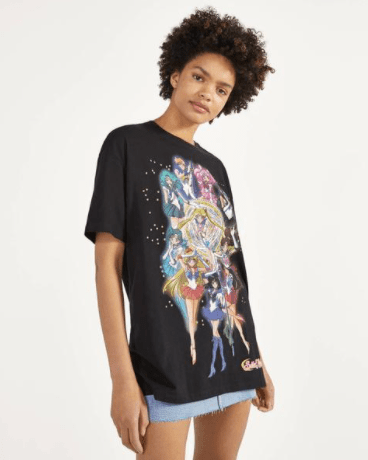Branding is an essential part of marketing, and brand image is one of a company's most valuable assets.
But no matter how powerful a brand may be on its own, it may need help to reach certain audiences or markets or to refresh its image. The solution in these cases may be a strategic collaboration through co-branding, in which brands team up to get better results.

What Is Co-Branding?
Co-branding is a marketing technique in which two or more brands collaborate to offer a single service or product for a limited time. This way, both can increase profits and improve their positioning thanks to their combined brand power.
The idea of co-branding originated in the 1950s, thanks to a strategic partnership between Renault and the jeweler, Van Cleef and Arpels. Renault brought out a new car model with an exclusive steering wheel with precious stones designed by Van Cleef. By collaborating, Renault managed to stand out with a unique and luxury car and the jeweler managed to expand its reach to new markets.
Co-Branding vs. Co-Marketing
It is important to be clear that co-branding and co-marketing are not the same thing. These are the main differences between the two concepts.
-
The scope of the collaboration. Co-branding focuses on the brand image of the collaborating companies, while co-marketing can go much further and cover aspects such as distribution, products and services, and revenue.
-
The economic model. In co-marketing, the allied companies share their economic results. In co-branding, the most common is that the brand considered secondary pays X amount to the main brand.
-
Operational performance. When co-branding, each brand puts its own teams to work on the collaboration. In co-marketing, on the other hand, it is common to create differentiated work teams solely for the project at hand.
Also bear in mind that there are different types of co-branding depending on the objectives and needs of each company.
-
Value co-branding: this alliance is based on brand values and involves two brands that complement each other, each extolling the values of the other. This way, they can enhance consumer trust and increase their impact on the public.
-
Complementary competence co-branding: in this type of co-branding, each brand join forces to innovate and create something that is greater than the sum of their parts. The result is that a new product is launched on the market that is only possible thanks to the collaboration of both brands.
-
Knowledge co-branding: this type of collaboration occurs when both brands have a similar target audience, but one of them wants to leverage the impact of the other to expand territorially and broaden its distribution and sales channels.
-
Ingredient co-branding: when two brands share the same values and market share, they can collaborate to bring out new products. For example, the alliance between McDonalds and The Hershey Company.
7 Keys to Successful Co-Branding
-
The most important thing for a co-branding strategy is that it must be a win-win. Think about what you can contribute and what you want to receive in return.
-
Co-branding is a strategy that can be used to achieve different objectives like accelerating growth in a specific market, reaching a new audiences, improving ROI, etc. It is very important to be clear about what you want to achieve, as this will determine the compatible brands and the collaboration strategy.
-
For a co-branding strategy to make sense, brands must be able to complement each other. It is essential that their values are compatible with each other and that they target similar markets.
-
Selecting the right brand is critical to the success of a co-branding campaign. In order to get it right, you need to conduct thorough research of the market and of your target audience.
-
Before launching a joint campaign, make sure you have clearly defined all marketing, legal and financial aspects together with the other brand.
-
In addition to having a set of individual objectives, both brands must decide which metrics will define the success of the co-branding venture. These metrics should be clearly defined in the form of key performance indicators or KPIs.
-
Finally, remember that in marketing, what you can't measure, you can't manage. Set up regular meetings with both your team and the other brand to evaluate the results of the collaboration and decide on the next steps to take.
3 Examples of Successful Co-Branding
1. Sailor Moon & Bershka
28 years after its creation, Sailor Moon is still in fashion among today's teenagers. Clothing retailer Bershka has taken advantage of its appeal to launch a new comfortable, urban collection inspired by the Sailor Guardians.
Thanks to this co-branding, Bershka managed to attract the attention of the otaku republic, while contributing to the continued growth of the Sailor Moon phenomenon.

2. Sesame Street & Adidas
It is not so easy being green, according to Kermit the Frog ("Kermit" in the original version of Sesame Street).

Adidas has used this slogan to promote its new Stan Smith sneakers, which use the innovative "Primegreen" material, free of plastics and with at least 50% recycled components. The shoes include a portrait of Kermit as well as his name and slogan.
3. Calvo & Carbonell
Calvo light tuna and Carbonell olive oil joined forces in an ingredient co-branding campaign that took advantage of the natural synergy between their products.

With this collaboration, Calvo was able to improve its brand image, since the quality of the oil in its preserves was guaranteed. For its part, Carbonell was able to take advantage of this opportunity to make itself known to a wider customer base.
Licenciada en Publicidad y Relaciones Públicas por la UAB. Digital Marketing Strategist en Cyberclick.
Degree in Advertising and Public Relations from the UAB. Digital Marketing Strategist at Cyberclick.






Leave your comment and join the conversation